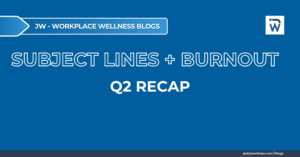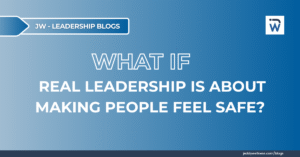Work-life balance may sound like a buzzword, but it’s crucial for personal well-being and professional productivity. As workplace demands rise, many individuals feel overwhelmed and experience burnout. The good news is that balance isn’t just about workplace policies—you can take action.
Burnout Doesn't Happen Overnight
It’s a slow burn—long hours, tight deadlines, and never-ending to-do lists can drain your energy before you even realize it. With nine months left in the year, sustaining peak performance without hitting a wall is the real challenge.
Instead of working harder, work smarter by using your signature strengths—the natural abilities that energize you and make work feel more fulfilling. Don’t know your greatest strengths – read our blog and take the strengths test.
The Six Areas of Work-Life Balance
Christina Maslach and Michael Leiter’s Areas of Worklife Scale identifies six key areas that influence burnout and engagement:
- Workload: The amount of work and its demands.
- Control: The degree of autonomy and decision-making.
- Reward: Recognition, compensation, and benefits.
- Community: Social relationships and support at work.
- Fairness: Fairness in decision-making and treatment.
- Values: Alignment between personal and organizational values.
Misalignment in any of these areas can also contribute to burnout. Understanding them helps you create effective solutions. The Areas of WorkLife Survey offers deeper insights into these areas.
Where Do You Fall on the Burnout-Engagement Spectrum?
When we think about burnout, we usually consider three key factors: exhaustion, cynicism, and inefficacy. But burnout can also be viewed on a spectrum. Research identifies three distinct profiles along the burnout-engagement continuum:
- Burnout (most negative): High exhaustion, cynicism, and inefficacy.
- Engagement (most positive): Low exhaustion, cynicism, and inefficacy.
- Three Intermediate Profiles:
- Disengaged: High cynicism only.
- Overextended: High exhaustion only.
- Ineffective: High inefficacy only.
Each profile presents a unique challenge and requires different strategies for improvement.

Tailored Strategies for Each Burnout Profile
Recognizing your burnout profile is the first step in applying targeted strategies to restore engagement and well-being.
1. Disengaged Worker (High Cynicism): Build Social Support
Burnout often leads to cynicism, where individuals feel disconnected or resentful toward work and colleagues. To counteract this, build a strong social support system using the FITT Model:
- Frequency: Regular check-ins to strengthen relationships.
- Intensity: Have meaningful, genuine conversations.
- Time: Spend quality time together, even briefly.
- Type: Focus on emotionally supportive interactions, not just transactional ones.
This model fosters a supportive environment that helps buffer against stress and burnout.
What to do: Download and use the FITT checklists and focus on building high-quality connections.
Key message: Social support is a powerful tool for reducing burnout and boosting engagement.
2. Overextended Worker (High Exhaustion): Manage Workload Effectively
Exhaustion can make people feel like working longer hours is the solution, but it often backfires. The Yerkes-Dodson Stress/Performance Curve shows that productivity peaks at an optimal stress level. Beyond that, performance declines, leading to burnout.

Learn the Difference Between Capacity and Capability
The key to managing exhaustion is understanding what drives, drains, and bores you. Find the “sweet spot” where stress is productive rather than overwhelming. Prioritize high-impact tasks, minimize distractions, and manage your energy effectively. [capacity vs capability video]
What to do: Understand the different types of workload:
- Prescribed workload: Official expectations.
- Perceived workload: How heavy the work feels.
- Actual workload: The real work you do.
Key message: Recovery is essential. Focus on the most important tasks and use your energy strategically.
3. Ineffective Worker (High Inefficacy): Build Competence Through Upskilling
What to do: Understand how upskilling differs from mastery before selecting a learning path. [upskilling vs mastery video].
Inefficacy often stems from a lack of confidence in one’s abilities. One of the most effective ways to counter this is through upskilling—enhancing skills, gaining knowledge, and building competence in areas that matter most to your role.
Identify Skill Gaps and Pursue Learning Opportunities Start by identifying the skills that feel like obstacles. Is it a technical skill, a communication challenge, or a lack of familiarity with certain tools? Once you’ve pinpointed the gaps, look for upskilling opportunities through courses, on-the-job training, mentorship, or self-paced learning.
Curious about the top skills employers seek in 2025? Read the slides (part 1) and (part 2).
Key message: Before jumping into upskilling, first identify your signature strengths—this helps you focus on skills that complement your abilities.
Final Thoughts
Burnout doesn’t look the same for everyone, so a one-size-fits-all approach won’t work. Whether you’re feeling disengaged, overextended, or ineffective, recognizing your burnout profile is the first step toward meaningful change.
- If cynicism is your challenge, focus on rebuilding social connections.
- If exhaustion is your struggle, shift from working harder to aligning your workload with your capacity.
- If inefficacy is holding you back, invest in upskilling to build confidence and competence in your role.
True work-life balance isn’t about doing less—it’s about making intentional adjustments that align with your needs, strengths, and goals. By applying targeted strategies, you can restore engagement, improve well-being, and perform at your best.
Understanding the burnout-engagement spectrum helps individuals, teams, leaders, and organizations find the best solution to overcome or prevent burnout.
Written By: Sumana Jeddy
______________________________
Stay Connected with Jeddy Wellness
Discover evidence-based research and innovative strategies to build and activate healthier workplaces.

Better Subject Lines + Burnout Profiles: Q2 Recap
Your Subject Lines Might Be Burning People Out Our most-watched Instagram Reel this past quarter (9.8K views, 59 interactions!) was just us yelling (lovingly) about

What If Real Leadership Is About Making People Feel Safe?
Who Do You Trust? Think of two people in your life you deeply trust. Why do you trust them? What have they done consistently to


